Cool Jobs: Unearthing the secrets of soil
These scientists get dirty to investigate unsolved mysteries
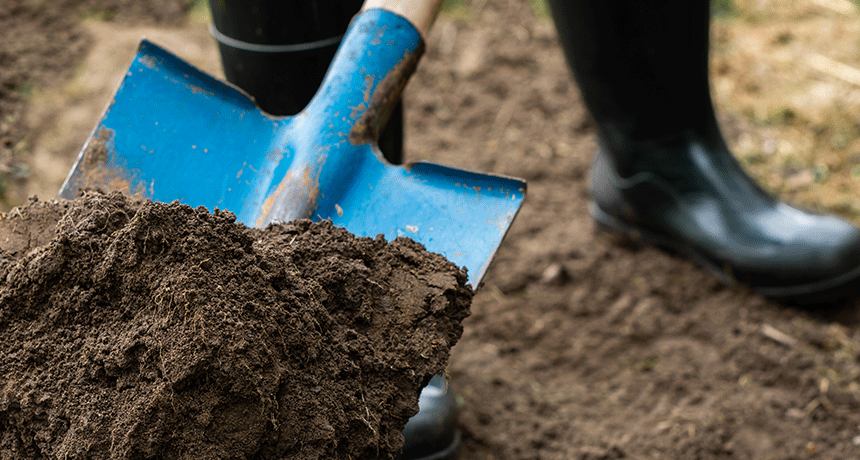
People often look at soils as just compacted dirt. In fact, soils are alive with microbes, worms and more. And their ingredients, which vary widely, can help everyone from crime fighters to anthropologists and climate scientists.
Jurgute/iStockphoto
The dirt under your feet is easy to overlook. But just because it’s common doesn’t mean it’s boring. Some researchers call soil the skin of the Earth.
“It’s the most important part of the planet, because it covers everything,” says Lorna Dawson. She’s a soil scientist at the James Hutton Institute in Aberdeen, Scotland.
Soil is the complex mix of minerals, carbon-rich matter, water and air that forms Earth’s surface layer. It does crucial jobs such as growing our food, cleaning the air and storing water. Soil contains the decomposing remains of plants and animals. And it’s alive with countless microbes, such as bacteria and fungi.
Soil also holds clues to major unsolved mysteries. Deep layers in bogs contain evidence of the activities of ancient peoples. Dirt under a shoe or on someone’s clothing can help scientists like Dawson catch criminals. And high in the Arctic, frozen soil holds bacteria that might one day help protect the planet.
Digging in frozen soil
Janet Jansson studies soil that is permanently frozen. Called permafrost, it covers a large portion of Earth’s Arctic surface. It also accounts for almost one-fourth of all land in the Northern Hemisphere.
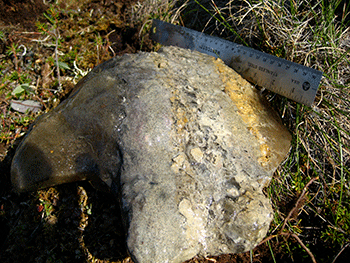
But scientists worry that some permafrost might not be permanent much longer. Human activities in recent decades have been spewing excess carbon dioxide and other greenhouse gases into the atmosphere. Those gases trap heat close to the planet’s surface, driving up temperatures. Not surprisingly, temperatures have been rising all across the globe, especially up north. That could spur big areas of permafrost to melt.
Because permafrost performs a really important job, its loss could lead to many problems.
Tundra is a treeless zone of vegetation in the far North that sits above permafrost. Its soils lock up one-third of all the carbon in soils across the planet. If the permafrost were to melt, dead plant matter in the soil would begin to rot. This would release the carbon that had been in those plants. Some of that carbon would enter the air as carbon dioxide gas. Scientists fear this could lead to even more global warming.
Jansson believes soil bacteria may be key to understanding how fast that plant carbon would be released. She’s a microbiologist at the Pacific Northwest National Laboratory in Richland, Wash. There, she studies the bacteria that live in frozen soils within the Arctic Circle at sites within Alaska and Greenland.
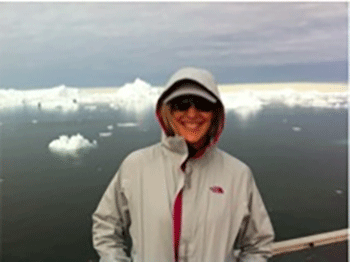
Some climate and soil scientists think microbes could speed the thawing of permafrost and its release of greenhouse gases into the atmosphere. Other microbes, however, might slow that process. Jansson is trying to find out how the interplay of microbes affect the release of carbon from soils. “Knowing which bacteria are there and what they’re doing can help us make better predictions,” she says.
A single teaspoon of soil can hold up to one billion bacteria. These microbes form tight-knit communities. This can make it hard to figure out which types of bacteria are present. Some of them also have proven hard to grow in the lab. Now Jansson doesn’t have to. She uses a set of techniques called metagenomics (MEH-tah-jeh-NO-miks). They allow her to analyze the genetic material in her soil samples. By focusing on their genes, she can now identify many of those soil bacteria.
Jansson hopes to find types of permafrost bacteria that naturally suck carbon dioxide out of the air, pumping it underground where it can be stored (without raising air temperatures). Understanding how these bacteria work might even help scientists invent new ways to reduce levels of carbon dioxide in the atmosphere, she says.
For example, scientists might one day “feed” helpful microbes to permafrost and other soils. These extra bacteria could then soak up more carbon from the atmosphere, storing it underground. This might be one way to fight global warming, she hopes.
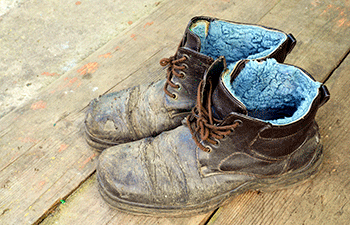
Catching criminals
Jansson studies dirt in cold places. Others are using dirt to solve cold cases.
For nearly two decades, Lorna Dawson studied how different types of soil form. Her career took a turn in 2003, when a police officer came to her lab and asked Dawson to help solve a crime.
The officer wondered whether dirt from the bottom of a suspect’s boot could help pinpoint the location of buried drugs. Dawson analyzed the soil and compared it to soil samples in her lab. She matched molecules of plant matter from the soil on the boot to a particular forest. That’s where the police looked — and found the drugs.
Explains Dawson, “There’s soil on most outdoor crime scenes. It contains hidden clues.” The work she did for the police switched her scientific focus. Today she is a forensic soil scientist. Her lab at the James Hutton Institute is one of the few in the world to focus on using soil in crime-solving. It helps investigators figure out where a crime took place, and where the perpetrator may have gone before or after committing a crime. Tiny bits of material trapped in soil can provide clues. Those bits may come from plants, clothing, algae — even air pollution.
The idea is hardly new. Investigators have been using soil to solve crimes for centuries. Soil even makes an appearance in Arthur Conan Doyle’s 1887 detective novel: A Study in Scarlet. In it, Dr. Watson remarks that based on the color of the mud, Sherlock Holmes can match the splash marks on a pair of trousers to different parts of London.
But for many years, detectives focused on soil’s physical traits. They might look at its color, feel how sticky it was or note how easily it crumbled. Alas, such clues weren’t always reliable. One person’s description of a shade of brown, for instance, could vary from someone else’s.
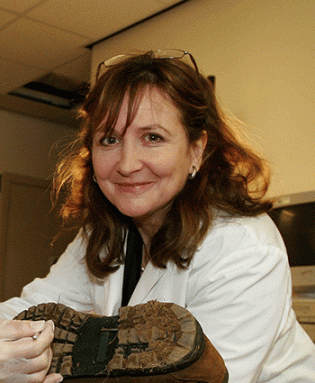
Dawson saw that by applying some of the scientific methods she used in her lab, she could improve the accuracy of forensic soil analysis. She began by analyzing organic matter in the soil. (Organic matter is the carbon-rich material left after plants and other organisms rot.) She used techniques called chromatography (KROH-muh-TOG-rah-fee) and mass spectrometry. These methods help scientists identify the molecules or elements that make up tiny bits of soil.
These analytical tools let Dawson work now with amazingly tiny samples of soil. For instance, she needs only 20 milligrams (0.0007 ounce) — an amount equal to about the size of a grain of rice — to tell whether a suspect stood in a farm field or the grassy border around it. “It’s such a small amount,” she notes, “that a person leaving the crime scene may not even know they are carrying it out.”
Such tiny clues may help tie up loose ends in a case. She recalls one 2014 case where the soil she analyzed from the bottom of a suspect’s boot helped to convict one of Scotland’s most notorious serial killers. This case had gone unsolved for nearly 40 years. Two 17-year-old girls had been killed. This case held special significance for Dawson. Both had disappeared in 1977 from a street near Dawson’s college dormitory at the University of Edinburgh. Their killings left her terrified to go out at night.
Dawson says being ready to stand up and testify in court is one of the most rewarding parts of her job. “Soil science,” she notes, “is one piece of the investigative jigsaw [puzzle] that can help to bring justice.”
Unearthing the past
Soil can help detectives figure out what happened at a crime scene. It can also help scientists and historians understand the far more distant past.
Kira Hoffman is a graduate student in Canada at the University of Victoria in British Columbia. As a community ecologist, she studies the links between different organisms in an ecosystem to better understand how they connect.
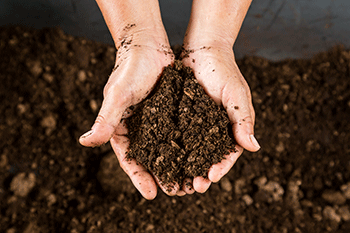
Her research takes her to the bogs of Canada’s coastal rainforest. Bogs are wetlands with soft, squishy ground. They tend to be filled with a type of moss called sphagnum (SFAG-num). It soaks up water like a sponge.
Bogs aren’t very common, Hoffman says. So they often end up being “these incredible secret ecosystems that people don’t know much about.” She has to canoe for an hour to get to her study site, which is just off the Canadian coastline.
The soils in the bog she studies date back 13,000 years. As she digs down through layers of soil, she finds clues about the plants, animals and people that lived in and around the bog back in time. Hoffman digs big holes in the ground to see the layers. When she dug down into the peat, she noticed perfect lines of charcoal running through some layers. That charcoal was evidence of fire.When sphagnum moss dies and begins to decay, it forms a type of soil called peat. The rotting plant material creates such an acidic environment that the wetland’s peat breaks down very slowly. As a result, a bog’s peat can hold a record of events going back thousands of years, Hoffman explains.
She used a technique called radiocarbon dating to learn how long ago those fires had burned. Radiocarbon dating works by comparing the relative amounts of two forms of carbon, called carbon-12 and carbon-14. One of the forms, carbon-14, is radioactive. Over time, its atoms decay (lose one or more subatomic particles) at a known rate. Those changes convert C-14 to C-12. Scientists can use the ratio of those two forms of carbon to determine the approximate age of come material containing carbon.
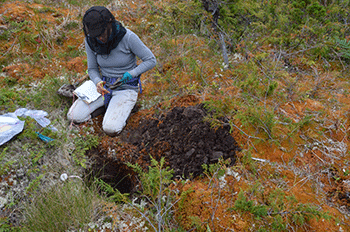
Hoffman says the charcoal lines and radiocarbon dating are evidence that Canada’s earliest native peoples used fire to shape the landscape for thousands of years. They may have wanted to clear the land so they had better sight-lines for the animals they hunted, she says.
The bog also contains many types of berries — cranberries, huckleberries and salmonberries. The native peoples of this region, back then, would have eaten these berries. They may have used fire to prune, or cut back, berry bushes. That could have made the berries grow bigger and juicier. (Removing some of the leafy green part allows the plant to put more energy into producing fruit.)
Fire can be a healthy part of an ecosystem, Hoffman explains, causing some plants to grow back thicker and sturdier.
“The bogs were home to these people. Using clues from soil, we can see how they lived,” Hoffman concludes. There are other questions she still hopes to answer about ancient lifestyles. Soil might help researchers discover what Canada’s first inhabitants ate, how they constructed their shelters and even what they did with their garbage, she says.
“Soil is really cool when you start to look closely at it!” she says. Hoffman encourages everyone to explore the ground beneath their feet: “You’ll begin to realize there’s this whole world going on in just a teaspoon of soil.”







